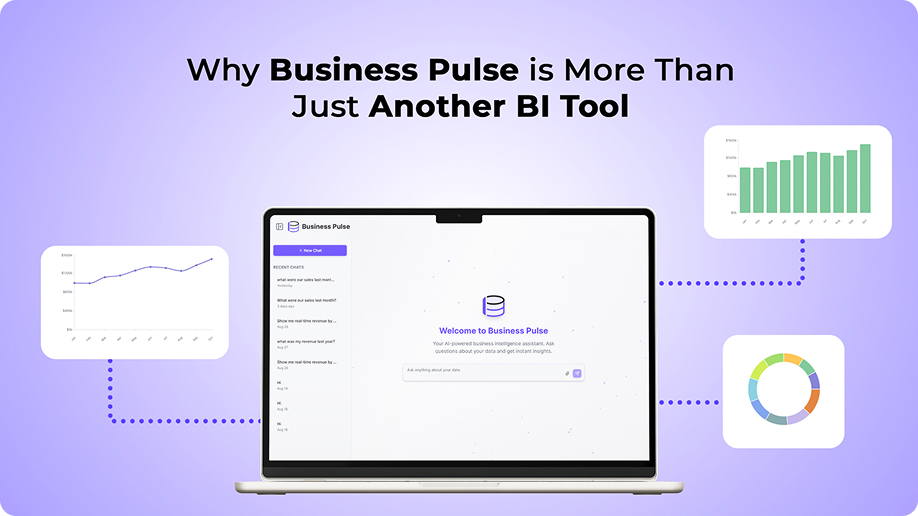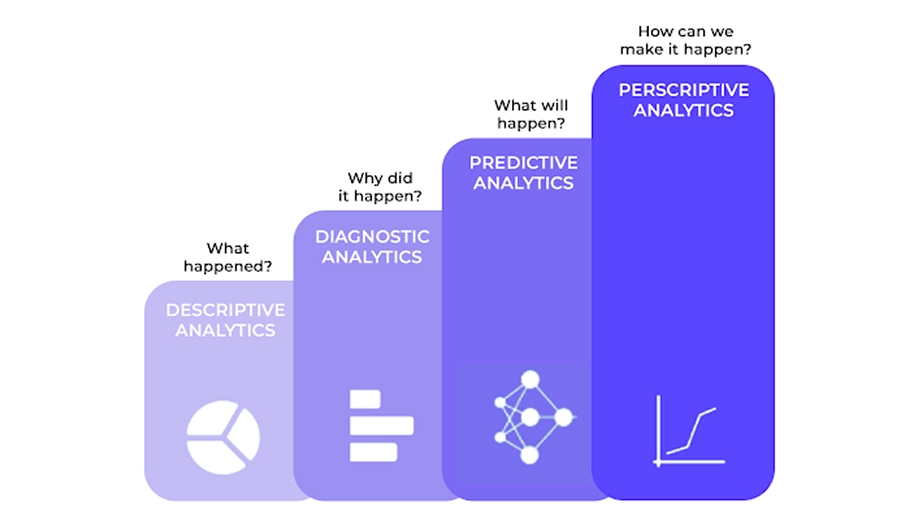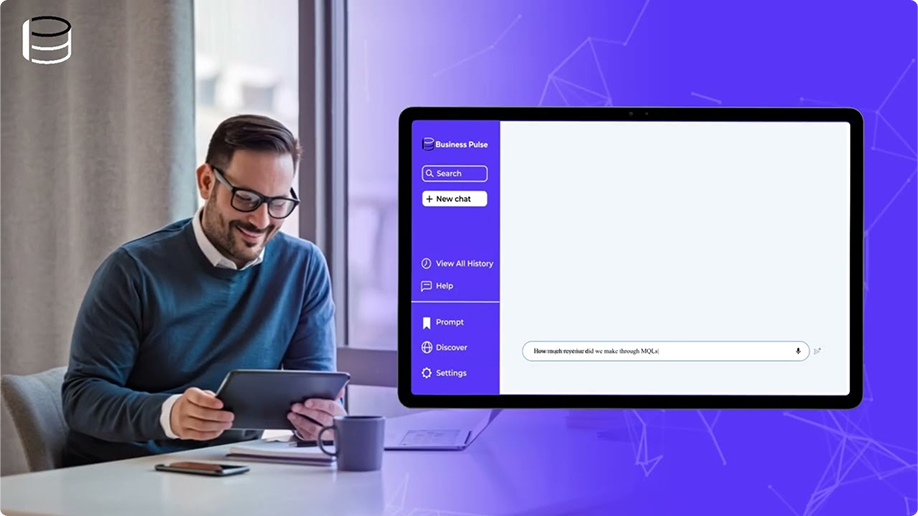
Rida Ali Khan

October 21, 2025

Are you an e-commerce business owner exploring the perfect BI tool after being tired of juggling multiple dashboards and spreadsheets to understand your store’s performance? Then congratulations, you’ve landed in the right place.
In this article, we’ll introduce the best data analytics software for e-commerce business owners while also breaking down why analytics is essential, the key types you should know, and practical ways to use them to accelerate revenue growth.
Astonishingly, many e-commerce founders still hesitate to invest in platforms that can give them a real-time view of their performance. \
You’ve put your blood, sweat, and tears into your e-commerce store. And we’re sure when it comes to picking software, you’d want to pick the best one in the market to do the job for you.
To help you nail this task, we’ve handpicked the 10 best e-commerce analytics software of 2025 so you don’t have to go through the trouble of trying and testing each.
We’ve also listed their strengths and weaknesses below so you can see which one fits your business needs the best.
Running an e-commerce business without the right analytics support often means operating in the dark. In simple words it’s like driving at night with your headlights off. You might move forward, but you won’t see what’s coming.
To help you understand better here are some of the most common challenges retailers face that lead to the need of a data analytics platform:
E-commerce businesses often struggle to understand who their customers really are, what they buy, and why they leave without purchasing. Without proper analytics, personalization becomes guesswork, leading to generic campaigns that fail to convert.
Shoppers move across multiple touchpoints, social ads, email campaigns, marketplaces, and your own website. Without a unified view, it’s nearly impossible to measure campaign ROI or see how touchpoints connect.
Overstocking ties up cash flow, while understocking leads to stockouts and frustrated customers. Real-time demand forecasting and order tracking are critical for healthy margins.
Waiting for static reports means you’re always behind.
By the time you know which ad campaign failed, you’ve already wasted money. E-commerce analytics software gives on-demand, real-time insights to help you pivot fast.
Which products are your true revenue drivers? Which campaigns are just eating your ad budget? Without analytics, you don’t know where to double down or cut losses.
Paid ads, shipping, returns costs add up quickly. Without analytics to pinpoint ROAS (Return on Ad Spend) or LTV (Customer Lifetime Value), you risk overspending without realizing it.
Without the ability to track trends, segment customers, and predict churn, you’ll miss out on upselling, cross-selling, and repeat-purchase opportunities.
👉 Bottom line: E-commerce brands don’t just need data. They need insights that drive conversion, retention, and profitability.
Now that we’ve explored why analytics is essential for e-commerce success, let’s break down the main types of analytics software that can help businesses unlock these benefits.
To truly harness the power of data, it’s essential to understand the four core types of analytics software, each answering a different question and serving a unique purpose in decision-making.
Let’s discuss these types one by one:
Every journey starts with understanding the past and that’s where descriptive analytics comes in.
Descriptive analytics helps businesses understand what has already happened by summarizing historical data into clear patterns and trends.
This foundational layer helps e-commerce business owners make sense of their historical data such as sales figures, customer demographics, inventory counts, and store traffic. Descriptive analytics uncovers patterns and trends and focuses solely on the past or present.
Impact on e-store? Summarizes your sales history, traffic, and campaign performance. Helps you see trends in AOV (Average Order Value), repeat rates, and customer cohorts.
Once you know what happened, the next step is uncovering the “why” behind the numbers.
Diagnostic analytics software helps businesses uncover why something happened by drilling into data to find root causes and correlations.
Acting like a medical diagnosis, this type of analytics identifies the root causes behind performance changes. Whether it’s pinpointing why sales dipped in a region or why a campaign underperformed, diagnostic analytics dives into underlying patterns and anomalies
Impact on e-store? Explains the “why” behind abandoned carts, churn spikes, or a drop in ROAS.
After identifying patterns and causes, predictive analytics helps you look ahead into the future.
Predictive analytics software helps businesses anticipate what is likely to happen next using models, algorithms, and historical data patterns.
By applying statistical models and machine learning to historical data, predictive analytics forecasts future outcomes like demand surges, customer churn, or emerging shopping trends
Impact on e-store? Uses historical data to forecast demand, predict customer churn, and anticipate which products are likely to sell out.
Finally, prescriptive analytics closes the loop by guiding you toward the best possible actions.
Prescriptive guidance acts like a virtual consultant, suggesting your next best steps to hit revenue goals or resolve inefficiencies.
This is the most advanced tier: it takes insights from descriptive, diagnostic, and predictive analysis and transforms them into concrete recommendations. Like optimal pricing, inventory levels, or marketing actions. Leveraging AI, simulations, or optimization algorithms, it guides retailers toward the most effective actions
Impact on e-store? Recommends actions like adjusting ad budgets, bundling products, or changing shipping thresholds. It’s like having a virtual growth consultant.
Here’s a visual reference for better understanding:

E-commerce analytics isn’t just about dashboards and reports, it’s about answering the real business questions that drive growth. With Business Pulse, you don’t need a data team; you just ask in plain language and get instant, actionable answers.
Here’s how e-commerce businesses can actually put analytics to work just by chatting with Business Pulse.
Note: The following questions can be answered by Business Pulse also if you connect a data source like CRM etc.
Spotting abandonment trends helps you optimize checkout flows and recover lost revenue with targeted remarketing.
👉 Ask Business Pulse: “What percentage of carts were abandoned this week, and what’s the lost revenue value?”
Instead of wasting budget, you can double down on what works and pause underperforming ads in real time.
👉 Ask Business Pulse: “Which campaigns delivered the highest ROAS yesterday?”
Highlighting star performers helps guide inventory planning, promotions, and bundling strategies.
👉 Ask Business Pulse: “What are my top 5 highest-margin products in the last 30 days?”
Unlocking customer insights lets you personalize offers and drive stronger loyalty.
👉 Ask Business Pulse: “Which customer segment has the highest repeat purchase rate?”
Stay ahead of demand, avoid stockouts, and ensure smooth fulfillment.
👉 Ask Business Pulse: “Which products are likely to stock out in the next 2 weeks?”
Easily identify the channels fueling growth so you can allocate budget more effectively.
👉 Ask Business Pulse: “Which channel brought in the most first-time customers last month?”
Bundles increase average order value and keep customers coming back for more.
👉 Ask Business Pulse: “What bundles should I create based on past buying behavior?”
Proactive retention strategies like discounts or loyalty perks, help win back at-risk customers.
👉 Ask Business Pulse: “Which customers are most likely to churn in the next 30 days?”
Pinpoint product issues early and improve both quality control and customer experience.
👉 Ask Business Pulse: “Which SKUs had the highest return rates last quarter?”
Finally get clarity on what’s really driving sales across multiple campaigns.
👉 Ask Business Pulse: “Which touchpoint most influenced conversions this week?”
A clear view of your customer mix helps refine acquisition and retention strategies.
👉 Ask: “What percentage of revenue came from repeat vs. new customers?”
Amazed how simple and easy it is to get data insights to accelerate your business. All just by chatting.
By now, it’s clear that e-commerce businesses can benefit greatly by having quick access to data.
Because the real deal isn’t just data itself but having clear insights to it and confident action. From understanding what happened (descriptive), to uncovering why it happened (diagnostic), to predicting what’s next (predictive), and finally deciding what to do about it (prescriptive), e-store owners need all four analytics layers working together.
That’s exactly where Business Pulse comes in.
Instead of juggling multiple tools, Business Pulse unifies your data across all channels, giving you a single source of truth that’s not only comprehensive but also conversational. You can simply chat with your data to:
In short, Business Pulse doesn’t just give you insights, it makes them actionable. It’s the ecommerce analytics companion that ensures you’re never in the dark, always ahead, and making smarter decisions faster.
Here’s a quick overview of Business Pulse In Action.

While Business Pulse shows how ecommerce businesses can benefit from analytics today, the future promises even more powerful possibilities. Let’s take a look at the key trends shaping the next era of retail analytics and how platforms like Business Pulse are leading the charge.
As analytics software evolves from basic reporting to conversational interfaces and soon toward fully autonomous, agentic systems, three key trends will define the next five years:
The market for conversation intelligence tools is growing fast, from $23.4 billion in 2024, projected to hit $25.3 billion by 2025, and expected to double by 2035 (forecast: USD 55.7B at a CAGR of 8.2%) Expect platforms like BusinessPulse to be at the forefront, making natural-language data queries a standard.
AI that acts, not merely informs is gaining traction.
Gartner predicts that by 2028, 33% of enterprise software will embed agentic AI, and 15% of everyday business decisions will be autonomously made by agents. Other forecasts echo this rapid ramp-up: Deloitte estimates 25% of enterprises using generative AI will pilot agentic systems by 2025, climbing to 50% by 2027
AI agents will increasingly coordinate among themselves forming collaborative “agentic teams” embedded within enterprise systems (CRMs, ERPs, RPA workflows).
Reducing friction and boosting efficiency. These agents will operate not just centrally, but at the “edge” making contextual, real-time decisions in decentralized environments. Microsoft’s bold projection: 1.3 billion AI agents by 2028, up from just millions in early 2025, a near 1,000x increase.
We know you probably still have a few questions about e-commerce analytics tools, so here are some quick answers to the most common ones business owners ask:
Yes. By tracking abandonment trends and revenue impact, platforms like Business Pulse help you launch timely email/SMS nudges, targeted ads, and checkout optimizations that directly recover revenue.
Yes. Predictive models flag SKUs likely to sell out, helping you plan replenishments early—so you never miss a sales opportunity due to stockouts.
Definitely. Platforms can segment by repeat purchase rate, AOV, or engagement, showing you who your true VIPs are—so you can build strategies to keep them loyal.
Get a free Data Maturity Audit and see exactly where your reporting and decision-making can improve.
Share this Blog

With over 5+ years in content marketing, I specialize in crafting narratives that connect brands with people. My expertise spans strategy, storytelling, and digital campaigns that boost engagement and growth. Outside of work, I enjoy photography, capturing moments, and exploring creativity through the lens.